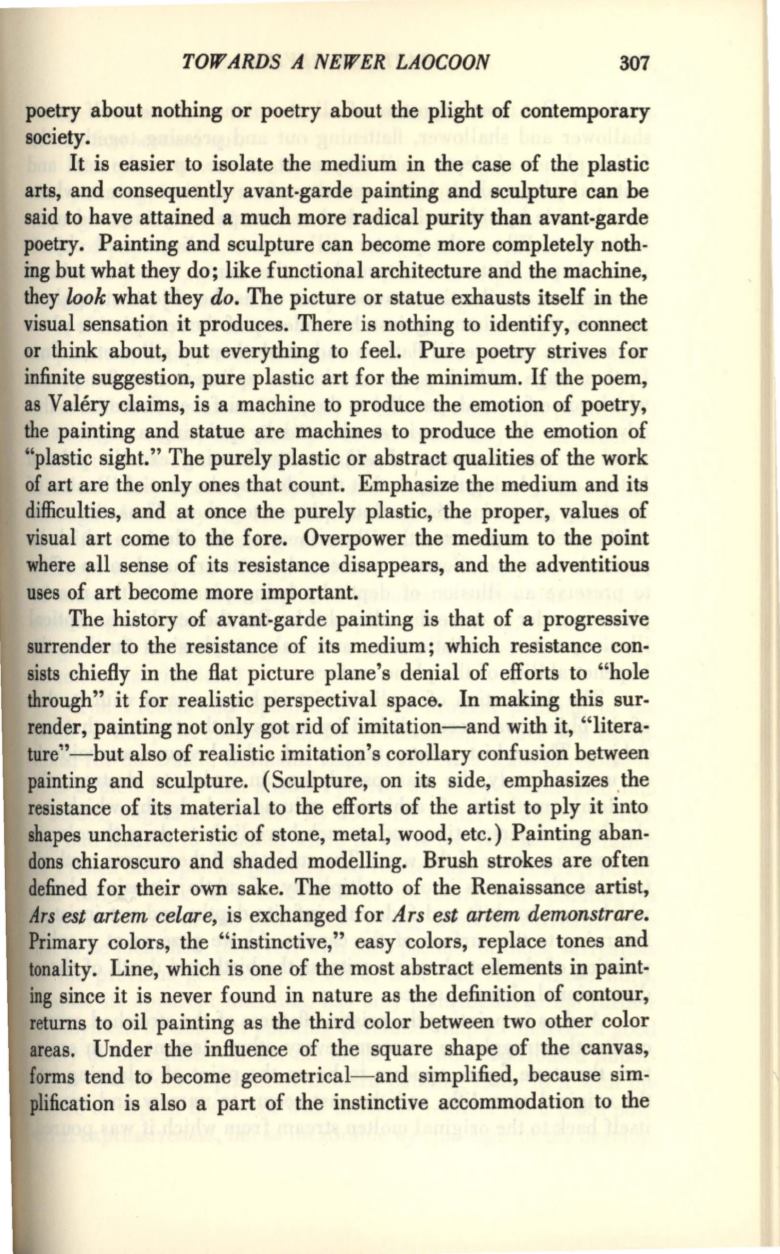
TOWARDS A NEWER LAOCOON
307
poetry about nothing or poetry about the plight of contemporary
society.
It is easier to isolate the medium in the case of the plastic
arts, and consequently avant-garde painting and sculpture can be
said to have attained a much more radical purity than avant-garde
poetry. Painting and sculpture can become more completely noth–
ing but what they do; like functional architecture and the machine,
they
look
what they
do.
The picture or statue exhausts itself in the
visual sensation it produces. There is nothing to identify, connect
or think about, but everything to feel. Pure poetry strives for
infinite suggestion, pure plastic art for
the
minimum.
If
the poem,
as Valery claims, is a machine to produce the emotion of poetry,
the painting and statue are machines to produce the emotion of
"plastic sight." The purely plastic or abstract qualities of the work
of art are the only ones that count. Emphasize the medium and its
difficulties, and at once the purely plastic, the proper, values of
visual art come to the fore. Overpower the medium to the point
where all sense of its resistance disappears, and the adventitious
uses of art become more important.
The history of avant-garde painting is that of a progressive
surrender to the resistance of its medium; which resistance con–
sists chiefly in the flat picture plane's denial of efforts to "hole
through" it for realistic perspectival space. In making this sur–
render, painting not only got rid of imitation-and with it, "litera–
ture"-but also of realistic imitation's corollary confusion between
painting and sculpture. (Sculpture, on its side, emphasizes .the
resistance of its material to the efforts of the artist to ply it into
shapes uncharacteristic of stone, metal, wood, etc.) Painting aban–
dons chiaroscuro and shaded modelling. Brush strokes are often
defined for their own sake. The motto of the Renaissance artist,
Ars est artem celare,
is exchanged for
Ars est artem demonstrare.
Primary colors, the "instinctive," easy colors, replace tones and
tonality. Line, which is one of the most abstract elements in paint·
ing
since it is never found in nature as the definition of contour,
returns to oil painting as the third color between two other color
areas. Under the influence of the square shape of the canvas,
forms tend to become geometrical-and simplified, because sim–
plification is also a part of the instinctive accommodation to the


